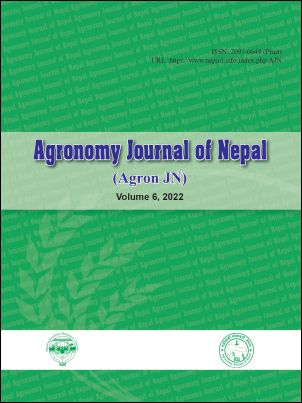Bridging the Yield Gaps of Major Cereals through Agronomic Interventions in Nepal
DOI:
https://doi.org/10.3126/ajn.v6i1.47952Keywords:
Agronomic practices, constraints, genotypes, yield gapAbstract
Agricultural production is due to the exploitation of soil, water and energy. The objective of this review work was to identify the yield gap of major crops viz. rice, maize, wheat, and finger millet and their causes. An attempt has been made to suggest the potential agronomical interventions that reduce the yield gaps. Rice, wheat, and finger millet yields in all agro-ecological zones are declining, although yield trends of maize were reported to have increased in the Terai due to the increased use of hybrids. The yield gap can be minimized with assured irrigation and appropriate agronomic practices such as the use of the quality seed, timely planting with appropriate establishment methods, timely intercultural operations, soil fertility, moisture, weeds, diseases, insect pests and post-harvest management along with growing high-yielding and stable genotypes resilient to climate change. It is obvious that there must be a strong interaction between plant breeding and agronomy for enhanced crop production. Therefore, some of the potential agronomical technologies that contribute to increase the crop yields thereby reduce the yield gaps have been discussed in this article.
Downloads
Downloads
Published
How to Cite
Issue
Section
License
Copyright (c) 2022 Agronomy Society of Nepal (ASoN)

This work is licensed under a Creative Commons Attribution-NonCommercial 4.0 International License.
ASON permits for free use, distribution and reproduction in any medium if the original work is properly cited and not used for commercial purposes.




